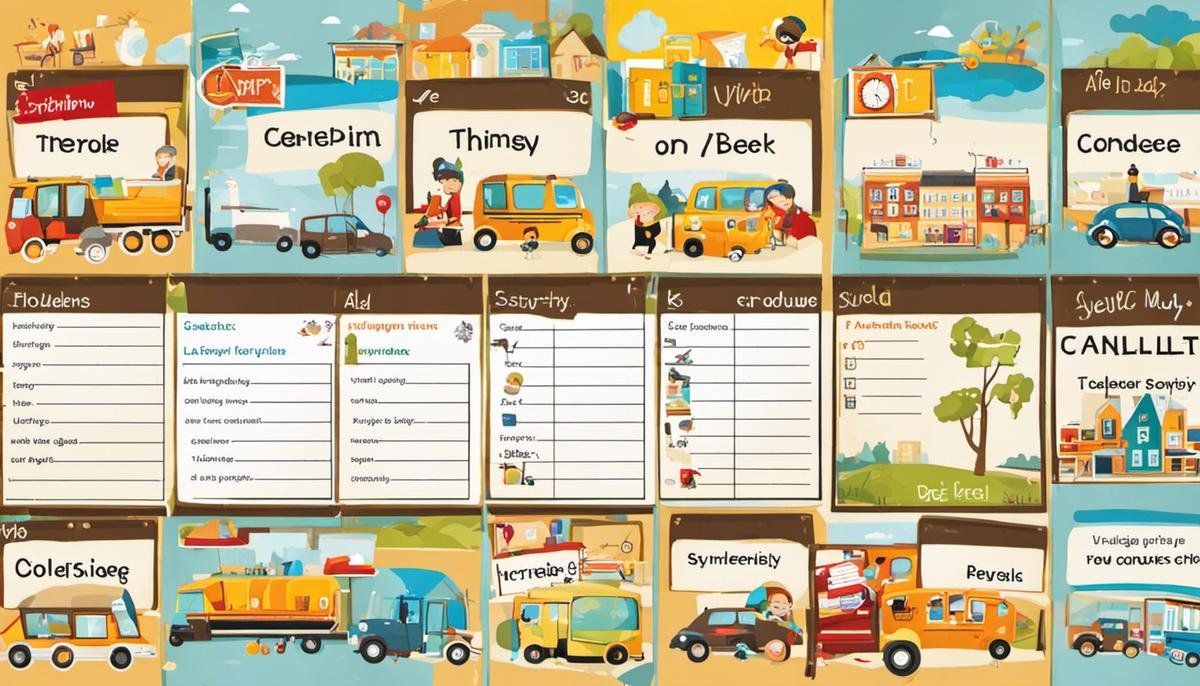
Understanding Autism Spectrum Disorder (ASD) and Asperger’s Syndrome is an enriching journey that helps unravel underlying intricacies and unique perspectives of those living with these conditions. Diagnosis of ASD, from recognizing early signs to interpreting developmental milestones, unfolds myriad narratives that help deepen our comprehension of this complex neurodevelopmental disorder. In a similar context, Asperger’s Syndrome, often associated with high-functioning Autism, echoes its own unique set of tales and experiences. Whether we are focusing on managing day-to-day family life and routinizing our existence or searching for ways to provide robust educational support and social integration for our loved ones with Autism or Asperger’s, understanding the nuances of these conditions is key to nurturing a supportive and inclusive environment.
Understanding Autism
Understanding Autism: Identifying the Signs and Discovering the Diagnosis Process
Autism, known clinically as Autism Spectrum Disorder (ASD), is a complex neurodevelopmental condition that affects many aspects of an individual’s life, from social interactions to communication skills and behavior. This broad spectrum means that no two persons with autism are exactly alike – they each navigate the world in their unique ways.
Autism typically begins to show in early childhood, usually within the first two years of life. It’s not always easy to detect. However, parents and caregivers armed with knowledge can help identify potential signs early on and seek the necessary interventions.
Early Signs of Autism
Parents may notice some unusual behaviors in their child, which could indicate the possibility of autism. Here are some common early signs:
- Delayed Speech: In comparison to peers, a delay in speech and language skills could be an early indication of ASD. This isn’t an absolute indicator, as some children simply take a little more time to hit their milestones.
- Restricted Interests: This refers to developing a deep interest in a particular topic or item, to the exclusion of other things.
- Repetitive Behavior: Repetitive movements, such as rocking back and forth, flapping hands, or spinning objects, could be indicative of autism.
- Irregular Responses: Children with autism might show unusual responses to sensory stimuli like light, sound, or touch and might struggle in social interactions.
Remember, these signs do not automatically mean your child has autism, but they could warrant further investigation.
The Diagnosis Process
Autism can be diagnosed by trained professionals such as pediatricians, neurologists, or psychologists. However, it is not as simple as conducting a lab test. Instead, it involves a comprehensive evaluation that considers the child’s behavior and development.
The diagnosis process often entails:
- Detailed Observation: Professionals observe the child during play and interaction and take note of the child’s behavior, social responses, and communication skills. They may also gather information from caregivers or teachers.
- Developmental Screening: This involves specific questionnaires, interviews, or checks, designed to evaluate the child’s development in areas such as speech, motor skills, and social abilities.
- Diagnostic Evaluation: If screening results suggest potential autism, a more detailed evaluation occurs. This could include behavioral assessment and cognitive testing to clarify the diagnosis.
Conclusion
Misconceptions about Autism Spectrum Disorder abound, but with knowledge comes understanding. Autism is not a condition to be feared, but a different way of experiencing the world. Understanding its signs and how it’s diagnosed paves the way for empathy and acceptance in our communities.
Remember, every child, regardless of whether they are on the autism spectrum, is unique and perfect in their own way. They each bring a distinctive ray of sunshine into our lives, teaching us the endless possibilities of love. Embrace their uniqueness for what it is – a beautiful expression of human diversity.

Understanding Asperger’s Syndrome
Continuing on from this insightful outline about Autism Spectrum Disorder, let’s dive further into one specific type of Autism called Asperger’s Syndrome. While Asperger’s Syndrome is part of the autism spectrum, it’s important to understand it as its own unique condition with specific signs and characteristics setting it apart from other forms of autism.
Asperger’s Syndrome is generally characterized by difficulty with social interactions and nonverbal communication, alongside limited and repetitive patterns of behavior or interests. However, unlike in many cases of autism, those with Asperger’s Syndrome typically do not have significant problems with language or cognitive development. This distinction can make identifying and diagnosing Asperger’s Syndrome a different process from identifying more general autism.
Some of the more distinct signs that might suggest Asperger’s Syndrome include an intense focus on a single interest, struggle with social cues, literal thinking, trouble understanding other’s emotions, and a desire for routine and predictability. Remember, all children are unique, and these signs might look different from one child to another.
An intense focus on a single interest is more than a phase or hobby. Those with Asperger’s Syndrome might be enamored with certain topics and may devote hours researching or discussing their interest. Social difficulties may involve misunderstandings over casual conversation norms, difficulty making friends, or avoiding eye contact.
Literal thinking often leads those with Asperger’s Syndrome to have trouble interpreting metaphorical language or sarcastic remarks. They might also have a hard time understanding other people’s emotions and body language, making them seem insensitive, though this is not intentional. As for the desire for routine, slight changes in schedule or environment can cause significant stress.
Differentiating between Autism and Asperger’s Syndrome can be difficult due to the shared characteristics and symptoms. However, the main distinguishing factor is often in the area of language development. Whereas many on the autism spectrum might have significant delays or differences in language development, those with Asperger’s Syndrome often do not.
Remember that each diagnosis has its distinct challenges and opportunities for growth. Understanding these tells us that not all experiences are similar, even within those diagnosed under the same spectrum. Knowledge is a powerful tool in fostering understanding, empathy, and a supportive environment for individuals with Asperger’s Syndrome. Different is not less, after all.
It’s crucial to start conversations that promote understanding and acceptance. The more we understand Asperger’s Syndrome, the more we can step into the shoes of each vibrant individual living with the condition. Together, we can build a more inclusive, supportive community for all. Undeniably, it’s the unique differences and characteristics in us that make us truly special.

Managing Family Life and Daily Routines
Creating Effective Routines for Children With Autism or Asperger’s Syndrome
When a child has Autism or Asperger’s Syndrome, families often face unique challenges in managing routines and schedules. Embracing predictability and routine can provide comfort and consistency for these children, helping them navigate their daily lives with more ease and less stress. Here are some strategies that can help guide families through creating an effective routine.
- Emphasize Structure and Consistency:
Children on the Autism spectrum often thrive with routines that are clear, predictable, and consistent. Try to keep routines the same each day, even down to the timing of meals, sleep, and activities. While there might be a need to make occasional exceptions, remember that sudden changes can be disruptive and potentially distressing for these children.
- Visual Schedules and Timelines:
A visual schedule or timeline can be incredibly helpful. Visual cues help children understand what activity comes next, which can alleviate anxiety about the unknown. Use pictures, symbols, or written words, depending on your child’s age and understanding.
- Prepare for Transitions:
Transitioning from one activity to another can be difficult for children with Autism or Asperger’s, especially when they are focused on a specific task or interest. Provide warnings before a transition, use timers to signal the start of the next activity, or incorporate a countdown routine to help ease the process.
- Customize to Their Interests:
Tailor the routine around your child’s interests – perhaps by incorporating their favorite games into free playtime or using their favorite character as part of a reward system. This can make routines more enjoyable and encourage participation.
- Use Clear and Concise Communication:
Communicate expectations in a way your child understands best, whether that’s through verbal instructions, gestures, or visual cues. Direct, straightforward language works best.
- Patience and Flexibility:
Some days will inevitably go off schedule, and that’s okay. Being willing to adapt, whilst maintaining consistency as much as possible, can make a big difference.
Remember, every child and every family is unique, so what works for one may not work for another. Continue refining and adapting the routine, keenly observing what your child responds well to and what they struggle with. With patience, empathy, and understanding, managing routines for children with Autism or Asperger’s Syndrome becomes not just feasible, but an enriching experience that can cultivate stronger bonds between family members and also empower the child towards a more independent lifestyle.

Supporting Education and Social Integration
Maximizing Education and Social Integration for Children with Autism or Asperger’s: Nurturing Their Brilliance
Beginning our journey, let’s focus first on unlocking the educational potential of children with Autism or Asperger’s. We know that conventional learning methods may not always be the best fit for them due to their unique learning styles and sensory needs.
How then, do we ensure their educational journey becomes fulfilling and not overwhelming? The answer lies in individualized education plans or IEPs. They are tailored not only to the child’s academic needs but also to their behavioral and social needs. The IEPs suit their learning style and pace, and it includes modifications and accommodations that help them to effectively grasp the curriculum.
Further, recognizing their affinity for technology can lead to significant breakthroughs. Many children with autism or Asperger’s showcase remarkable aptitude towards computer-based learning. Education technology, such as interactive apps and games, can be excellent mediums to foster their cognition, motor skills, and social capabilities.
Now, pulling back the curtains from their social integration – children with Autism or Asperger’s may sometimes find it challenging to form social bonds due to differences in their social interaction capabilities. Here, teaching social skills explicitly and directly can be a boon. Role-playing common social scenarios, understanding emotions, recognizing facial expressions can substantially enhance their social cognition.
Next, we want them to build a network of friends. Encouraging them to join clubs or groups based on their interests can help them build a social network and introduce them to the joy of friendship. Let’s remember, the world of a child with Autism or Asperger’s could be rich, filled with their unique passions.
Parents and caregivers play an instrumental role in advocating for their child. It’s important to keep teachers and peers informed about the child’s unique set of capabilities. This information can foster understanding, acceptance, and prevent any form of bullying.
Lasti, let’s look at the impact role of therapies like speech and occupational therapy. They play a vital role in enhancing the life skills and communication skills of children with Autism and Asperger’s. The combination of these can ultimately prepare them better for successful social integration.
Remember, every child with Autism or Asperger’s has the potential to succeed and flourish in their own unique ways. And as parents, educators, and loving community members, we can provide the flexible and supportive environment they need to turn their special skills and talents into incredible strengths.
Together, we can help them embrace the diversity they bring, guiding them to realize their full potential – so they may soar high, and fulfill their aspirations. They are not just children with Autism or Asperger’s, they’re our shining stars – unique, brilliant, and amazing in their own rights.

Taking Care of Yourselves as Parents
In the midst of it all, as parents raising children with Autism or Asperger’s, we often find ourselves completely immersed in the world of our children, making sure they get the necessary support they need to navigate their unique world. But, every so often, we need a gentle nudge to remind ourselves that it’s just as crucial to take care of our own mental and emotional health.
Parenting is stressful for anyone, and it’s all the more so for parents of children on the autism spectrum. It’s like a roller-coaster ride with ups, downs, loops, and unexpected twists. It’s not uncommon to feel drained, overwhelmed, and sometimes even isolated. These feelings are normal and an integral part of the journey of parenting children with special needs. The trick, however, lies in not letting these feelings take the reins.
Creating a Support Network is golden. Reach out to family, friends, or other parents in similar situations. There are plenty of support groups, both offline and online, where mutual experiences and advice can be shared. Knowing you’re not alone can bring immense relief and can uplift spirits in an enormous way.
Consider joining a psychotherapy or counseling program. It can provide an outlet to vent out anxieties, fears, and frustrations and in doing so, offers a way to tackle mental stress. Therapists can help build resilience and teach effective coping strategies. Remember, there’s no shame in seeking help.
Taking time for oneself may seem like a dream for many of us, but it is essential. Enjoy some “me” time. It could be sipping a cup of coffee while reading a good book, taking a leisurely bath, practicing mindful meditation, or going for a jog. Maybe even remember those hobbies that used to bring immense joy but somehow got brushed aside in the humdrum of life. Doing anything that reignites the spark can work wonders on mental health.
Trying to maintain a balanced lifestyle can be an excellent strategy as well. Eating a well-balanced diet, exercise, and a good sleep schedule are just as important. They have been proven to lower stress levels, improve mood, boost energy levels, and promote overall mental wellbeing.
Stay organized. A structured environment can lower stress levels, not just for the kids but for parents as well. It helps in setting realistic expectations, aids with daily functioning, and can bring about a sense of calm and control in an otherwise chaotic situation.
Finally, don’t forget to celebrate the wins, no matter how small they may seem. It’s easy to overlook the positive moments when one is caught up in managing the challenges. Take a step back and relish those precious moments. They are the ones which add fuel to keep us going in this journey.
Remember, it’s okay to ask for help, it’s okay to take a break, and it’s perfectly okay to take care of oneself. Because only when we are in good shape emotionally and mentally, can we provide our children with the care and support they require. So, dear parents, let’s make a promise today to take care of not just our children, but ourselves too. We are worth it!
Because in the beautiful words of Christopher Robin to Winnie the Pooh, “You are braver than you believe, stronger than you seem, and smarter than you think.”

Undeniably, having a child with Autism or Asperger’s can lead to elevated stress levels for parents. However, acknowledging the need for self-care, finding strategies for emotional health maintenance, and forging a supportive network within the community can serve as a sound bedrock. The journey might pose challenges, but it is also filled with insurmountable joy and a profound sense of personal growth. As we continue to expand our knowledge of Autism and Asperger’s Syndrome, let us remember the strength and resilience exhibited by those living with these conditions every day, and focus our energies to foster understanding, acceptance, and meaningful support for them.




